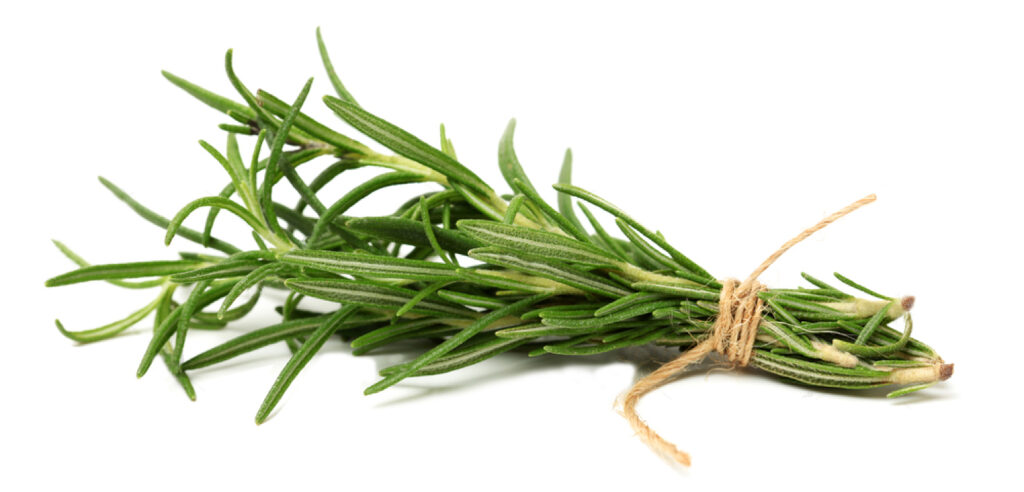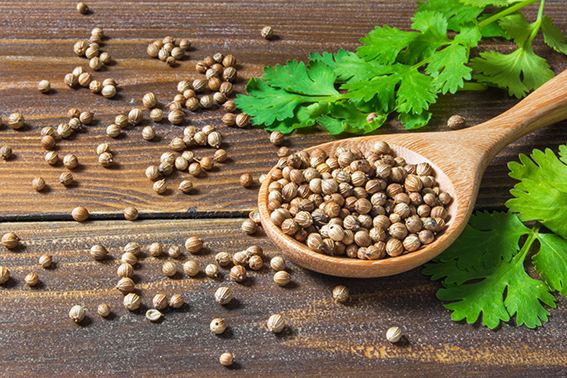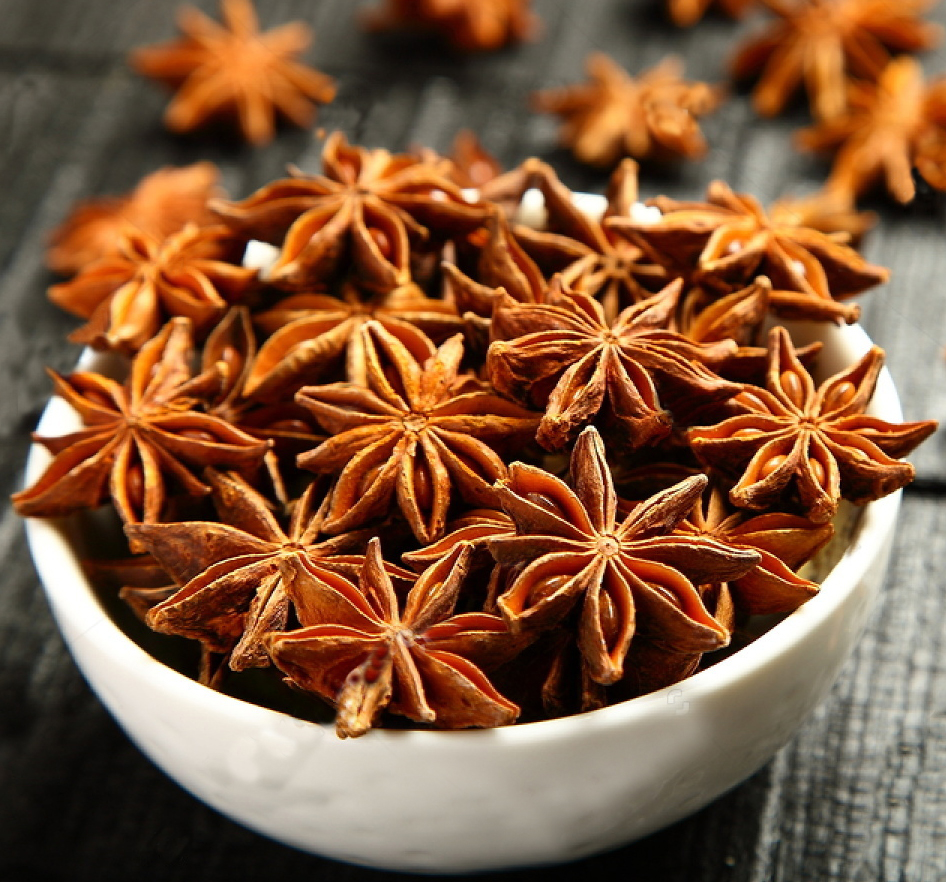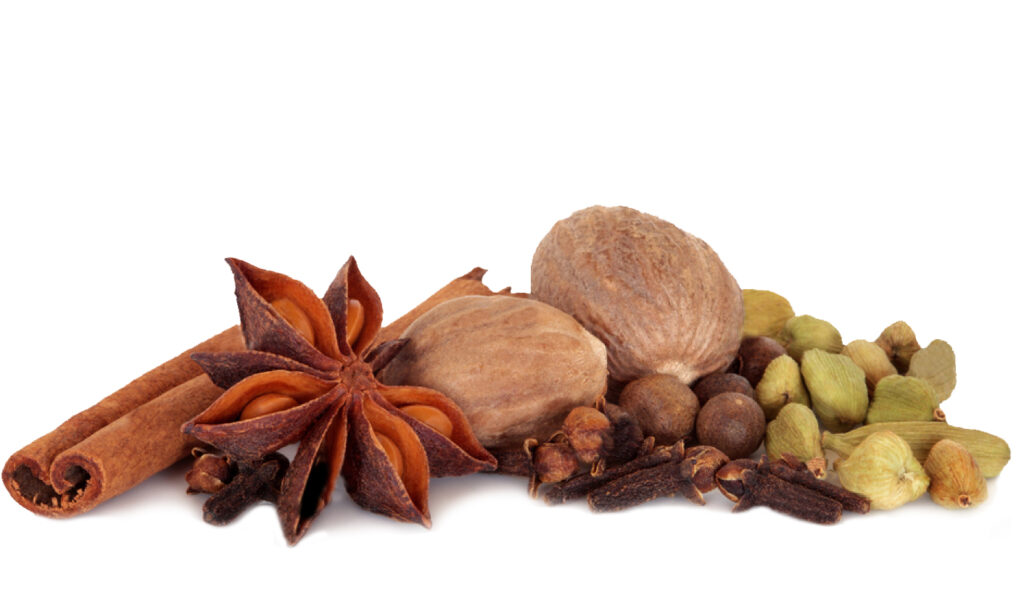
Herbs, spices and dishes that are every wine lover’s nightmare!
By Tiffany Vernon
Approx 10 minute read
When you’re a wine lover through and through, like me, it can be to your detriment. Evening meals can sometimes feel lonely without a glass of vino alongside to elevate the dish, and tucking into a tasty meal, that is rich in flavours after the care and attention ensued to prepare it, accompanied by a glass of water just feels wrong… There are, of course, a few ingredients or dishes that can leave a wine lover scratching their head as they puzzle over what bottle to open. There are basic rules with food and wine matching – like matching the intensity of flavour or sweetness of a dish to the wine and considering acidity or alcohol levels – but some meals don’t like to play by these. So, here is a rough guide on how to pair some of those classically delicious but notoriously tricky herbs, spices and dishes with a wine that will be very enjoyable next to your plate.
Indian Curry

A curry house is very much where beer rules supreme, but there are times when a beer just won’t do (or you’re not partial to a pint but do enjoy wine), so you need to be armed by a palatable match.
For creamy-based curries, such as butter chicken, a Chardonnay will do the trick. This could have a dash of oak influence if you wish or simply exude ripe, tropical fruit.
If you’re partial to a tomato-based curry, look for a rich and fruity red – Zinfandel, Shiraz, or even a full-bodied but ripe Merlot would be my go-to. Always bear in mind the level of spice you want to enjoy because the more spice in your food, the harsher the alcohol will feel in the wine.
Thai Curry
Beautifully fragrant and often accompanied by a kick of spice, Thai food can pose a threat to your usual favourite Malbec or Sauvignon Blanc (or other wine). Instead, opt for an aromatic white such as Riesling or wines from Alsace. The spicier your curry, the more sweetness you will want in your glass to balance it out, so an off-dry Riesling or Gewürztraminer is just the ticket. If like me you are a wuss when it comes to heat, a fragrant dry Muscat or Gentil/Edelzwicker (a blend of local grape varieties, which often includes Muscat, Riesling, Gewürztraminer, Pinot Gris and Sylvaner) will be delicious alongside a milder curry.
Jerk Chicken
Another dish that works well with off-dry Riesling (basic rule of being a wine lover: always have a Riesling in stock at home!), jerk chicken also has a great rosé following. You may have already dismissed both of those wine options and gone back to reaching for that can of [insert generic beer brand here], but hear me out. We already know that a touch of sweetness is great for spice, but rosé works more on the principle of having abundant juicy fruit (not sweetness), which also complements spice well. Try a Garnacha-based rosé for depth of flavour and don’t be put off by its deep colour! If you’re still reeling at the idea of Riesling or rosé in your glass, however, opt for a light but fruity red such as Pinot Noir instead.
Buffalo Wings
Sticking with a chicken theme, we move from Jamaica to USA with a classic sports bar snack. While the bar might not stock a wide variety of wines, I’m sure your home does! This is another dish that pairs well with Gewürztraminer – those rose petal and lychee aromas might not seem the obvious choice, but the palate is rich and flavoursome with that all-important heat-tempering sweetness (but not too much!).
Arrabiata Pasta

Back to European favourites, this spicy Italian sauce is regularly found on pasta restaurant menus and in posh microwave meals! My golden rule for food and wine matching is always to pair a country’s dish with its local wine, so here we are seeking something Italian. Of course, there is a plethora of wine choices here, but my recommendation is to enjoy a Valpolicella – this cherry-laden red is so sumptuous and juicy it will handle the spice well. If you prefer a wine with a bit of richness, opt for a Valpolicella Ripasso for that added oomph.
Honing in on ingredients
It’s worth noting that when it comes to food and wine matching, there are times it is impossible to find a wine to marry every individual ingredient, so the best approach is to pick out the dominant flavours of your meal and focus on matching those instead. See below for a few examples.
Olives

Love them or hate them – even pop them in your Martini – this salty and savoury snack packs a unique flavour that can be hard to match. I have, however, another perhaps controversial suggestion for you: Sherry. I’m not talking about the sickly-sweet versions of days gone by but the dry variations such as Fino or Manzanilla. Their yeasty characteristics with a saline edge and bruised apple fruit are the best match you will ever find to olives – I promise you once you’ve tried it, you will never look back!
Asparagus
Perhaps not your immediate thought of a difficult ingredient, but when you do think about it, asparagus isn’t straightforward. There is a simple wine match answer, however, and that is Sauvignon Blanc. Zippy and fresh, with green flavours of grass, gooseberry and tomato leaf, this world-loved grape variety is a refreshing match to this unique vegetable.
Mustard
Whether you prefer English mustard or a softer Dijon-style, this condiment could be paired with a red or white wine depending on the other flavours of your recipe (remember, try to hone in on the most dominant flavours to match). For a simple catch-all wine match, however, I would recommend Chardonnay. This versatile variety can be steely, light and mineral or big, buttery and oaky, making it a great mustard go-to!
Narrowing down the herbs and spices
Some of the dominant flavours in a recipe come from the smallest things – from a garnish to seasoning and a sprinkling of spice. Read on for my breakdown of the small yet mighty pairings…
Rosemary/ Thyme/ Sage

You might not always use these herbs in tandem with one another, but I have simply grouped them for ease. They remind me of what is referred to as garrigue in southwestern France – a blend of Mediterranean shrubbery herbs, including things like sage, fennel, mint, bay leaves and lavender. Continuing with my golden rule of matching local ingredients with local wine, a Provence rosé would work a charm here – thirst-quenching and dry with crunchy red fruit character and a mineral vein; these wines can be utterly charming when paired with herby foods. Alternatively, a stone’s throw away from Provence is the Rhône Valley, so depending on what you’re enjoying your herbs with, you might need a more robust wine. Côte du Rhône reds (and a few from the Languedoc-Roussillon region) often display a touch of that garrigue character in them too.
Basil/ Oregano
Again, these could work well with a Provence rosé, but I have separated these with the other herbs because a refreshing Italian white or Sauvignon Blanc would work better than a gutsy red. Think Gavi or Verdicchio from Italy or a grassy Loire Valley Sauvignon. If you fancy trying something a little more different, Assyrtiko from Santorini has a refreshing saline edge and mineral texture that has enough character to match these fragrant herbs.
Coriander

Chenin Blanc is an ideal match here and works very well with a variety of dishes – including curries (a wine I didn’t mention earlier…). For a lighter dish using coriander, choose a Loire Valley Chenin, such as Vouvray or Savennières; for those richer and perhaps meatier recipes, select a South African Chenin that exudes all those lovely tropical fruit characteristics, or even one that has seen some oak.
Mint
A lighter mint-based dish such as a salad, calls for a refreshing glass of white Bordeaux, but when mint is used as a sauce for classic combinations such as with a leg of lamb, a red wine feels more appropriate. Cabernet Sauvignon is renowned for often having a menthol or eucalyptus character to it – particularly in Australian examples – which naturally lends itself to complementing the herb itself. An alternative red grape to try is Carménère, synonymous with Chile but originally from Bordeaux; this variety can give a lovely herbal characteristic on a backdrop of dense black fruit.
Paprika
This sweet and smoky spice can transform a simple midweek meal into something moreishly good, but its distinctive flavour doesn’t make it easy to match. A plushy, soft red wine brimming with red fruit character is what we need, and Tempranillo is the answer! Made famous by Rioja, this Spanish grape variety can provide a glass of something light and fruity or provide more complex examples of powerful that are often aged in oak. If your paprika is particularly smoky, try a Rioja Crianza, which often offers a balanced combination of pure fruit with vanilla flavours.
Star Anise

For me, this is one of the hardest flavours to match in a dish – its potent and often part of a sweet sauce meaning the wine options are pretty narrow… But I’m here to rescue you with a solution. The Italian variety Barbera can be made in a spectrum of styles (including sparkling!), but it consistently produces reds of deep colour, abundant fruit and high acidity – a triple threat combo for matching star anise. For more serious Nebbiolo-esque examples, look for Barbera from regions such as Asti, or for a lighter and slightly frivolous style, shop a bottle from Lombardy.
Ginger
Firey, sweet or pickled, I have a great affection for ginger. Funnily enough, it also pairs well with one of my favourite grape varieties: Viognier. This white originates from the Rhône Valley but is widely grown across the world, offering rich and aromatic wines that exude peach, honey and white blossom characteristics. You can also find examples that develop a smattering of ginger too, especially in Australian variations. Alternatively, a zesty, lime-scented and slightly peppery Grüner Veltliner also complements ginger very well.
Baking Spices

Think cinnamon, nutmeg, clove and cardamon – these are the ‘sweet’ spices that aren’t just reserved for Christmas. Off-dry Rieslings can work well here – seek out wines labelled as Kabinett or Spätlese from Germany – Riesling from the Mosel region are more delicate with apple and citrus fruit, whilst examples from the Pfalz or Rheingau tend to be fuller-bodied with peach and orange blossom notes. For desserts or other sweet treats that encompass these spices, select a classic Sauternes where the honey and marmalade flavours can make a fabulous match. Finally, if using ‘baking spices’ in a more savoury dish to enhance rich flavours, consider pairing it with a fruit-forward Syrah such as a Crozes-Hermitage.

